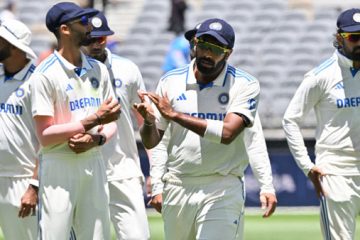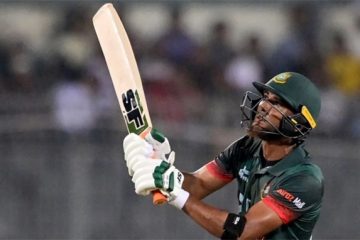Barely a month after playing a five-match series in December, many Indians and Sri Lankan thought the participation in the Idea Cup tri-nation one-day tournament was meaningless, but certainly that was not the case for Bangladesh, the other team of the competition.
It was an opportunity for them to know how much they have progressed and justify that the successes they had last year did not come just because the opponents were weaker.
Coach Jamie Siddons had added one point to this before the tournament saying that it will also provide them an opportunity to know if they are on the right track ahead of the World Cup 2011.
With the hosts already playing their first two matches, Siddons must be pleased, without bothering about the outcomes, that at least Bangladesh’s batsmen showed that they have made a significant improvement under his tutelage.
If 260-7 against Sri Lanka in the opening match made him reasonably happy, the 296-7 against India on Thursday should give him a greater satisfaction for many reasons. Firstly, it was a sign of consistency and secondly it came against stronger oppositions.
The surprising yet the bold decision to bat first despite knowing that dew may cause problem for the bowlers in the second half also has been vindicated as Bangladesh made their highest total against India bettering the previous record of 283-6 in Karachi at the Asia Cup 2008.
Another pleasing thing for Bangladesh was that their batsmen were able to use all three Powerplays for good reasons. While they have scored 73 and 25 runs in the first two Powerplays of 10 and five overs respectively, Bangladesh added 54 runs in the last Powerplay taken by the batting side.
The ticket prices have been fixed higher than usual this time which left a major part of gallery empty, but those who preferred to come to the ground had every reason to feel that their money was worth spending.
Tamim Iqbal smashed a blazing 60 off 42 balls to give the Bangladesh innings a rollicking start while Mahmudullah finished it in style with an identical score which needed just three more balls.
Between Tamim and Mahmudullah, Imrul Kayes scored 70 from 100 balls to justify his inclusion as an opener ahead of Shahriar Nafees.
One good thing was that Kayes was able to use his chance after Harbhajan Singh had dropped him off Ashish Nehra on three. Most importantly, however, Kayes helped Bangladesh build a 50-plus opening partnership for second successive match.
After a 65-run opening stand in the first match against Sri Lanka, this time it was even better with Tamim and Imrul plundering 80 runs for the first wicket, which was a record against India. Previously, Bangladesh’s best opening partnership against India was 78, which also came at this very ground in 2007 with Javed Omar being the partner of Tamim.
Needless to say that Tamim took the leading role in the record stand as he took all three new-ball bowlers to his sword. When Bangladesh raced to 50 in 7.4 overs, Tamim had 41 runs to his name and Kayes had only three.
Tamim raced to his fifty in only 33 balls which must have reminded the Indians of the opening match of World Cup 2003 when the left-hander scored 51 off 53 balls. While his innings at Port of Spain acted as catalyst for Bangladesh to progress to the Super Eights, it wrote the epitaph of India in that competition.
Tamim’s sixes off Zaheer Khan dancing down the wicket in that World Cup match has still remained as one of the greatest advertisement for Bangladesh cricket. The memory must
have crossed the mind of Zaheer as Tamim again punished him with disdain.
His strike rate against India’s main strike bowler Khan was 200 as the opener plundered 12 runs from his six balls. Before the ICC World Twenty20, Tamim had told reporters that he dared to hit Zaheer because he did not know him.
This time Tamim knew who Zaheer Khan was and still it did not panic him. Same can be said about the Bangladesh team also. They knew these Indians were vying for the top spot in the ICC rankings, still they were bold enough to play their own game – impulsive but impressive.




















